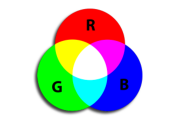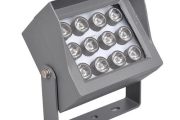The differences are as follows:
- SMD is a kind of component, SMT is a kind of technology and craft. One is an object, and the other is a non-object.
- Different roles. After SMD is used in the first batch of automated machines, they can place some simple pin components, while SMT is a circuit assembly technology that mounts leadless or short lead surface mount components on the surface of a printed circuit board.
SMD is the abbreviation of Surface Mounted Devices, which means: surface mount device, which is one of SMT (Surface Mount Technology) components. In the initial stage of electronic circuit board production, the via assembly is completely completed manually.
SMT is a circuit assembly technology. The process is to mount the leadless or short lead surface assembly components (SMC/SMD for short, chip components in Chinese) on the surface of the Printed Circuit Board (PCB) or the surface of other substrates through reflow Soldering or dip soldering and other methods to be welded and assembled.
What is SMT
SMT patch introduction
SMT patch refers to the abbreviation of a series of technological processes that are processed on the basis of PCB. PCB (Printed Circuit Board) is a printed circuit board.
SMT is surface mount technology (Surface Mounted Technology) (abbreviation for Surface Mounted Technology), and it is the most popular technology and process in the electronics assembly industry. Electronic circuit surface mount technology (Surface Mount Technology, SMT), called surface mount or surface mount technology. It is a kind of leadless or short lead surface assembly components (SMC/SMD for short, chip components in Chinese) mounted on the surface of a printed circuit board (Printed Circuit Board, PCB) or the surface of other substrates. Circuit assembly technology in which reflow soldering or dip soldering is used for soldering and assembly.
Under normal circumstances, the electronic products we use are designed by pcb plus various capacitors, resistors and other electronic components according to the designed circuit diagram, so all kinds of electrical appliances need a variety of different SMT chip processing techniques to process.
SMT basic process
Process: solder paste printing –> parts placement –> reflow soldering –>AOI optical inspection –> maintenance –> sub-board.
Electronic products are pursuing miniaturization, and the previously used perforated plug-in components cannot be reduced. Electronic products have more complete functions, and the integrated circuits (ICs) used have no perforated components, especially large-scale, highly integrated ICs, and surface mount components have to be used. With mass production and automation of production, the factory must produce high-quality products at low cost and high output to meet customer needs and strengthen market competitiveness. The development of electronic components, the development of integrated circuits (IC), and the diversified application of semiconductor materials.
The revolution of electronic technology is imperative and chasing the international trend. It is conceivable that when the production processes of international CPU and image processing device manufacturers such as Intel and AMD have advanced to a few nanometers, the development of smt, such as surface assembly technology and process, is not a case.
The advantages of SMT chip processing: high assembly density, small size and light weight of electronic products. The volume and weight of SMD components are only about 1/10 that of traditional plug-in components. Generally, after SMT is adopted, the volume of electronic products is reduced by 40% to 60%, and the weight is reduced by 60% to 80%. High reliability and strong anti-vibration ability. The defect rate of solder joints is low. Good high frequency characteristics. Reduce electromagnetic and radio frequency interference. It is easy to realize automation and improve production efficiency. Reduce costs by 30%~50%. Save materials, energy, equipment, manpower, time, etc.
It is precisely because of the complexity of the process flow of SMT patch processing that there are many smt patch processing factories that specialize in SMD patch processing. At present, the world has benefited from the vigorous development of the electronics industry, and SMT chip processing has made an industry prosperous.
SMT process
SMT basic process components include: screen printing (or dispensing), placement (curing), reflow soldering, cleaning, testing, and repair
- Silk screen: Its function is to leak solder paste or patch glue onto the PCB pads to prepare for the soldering of components. The equipment used is a screen printing machine (screen printing machine), located at the forefront of the SMT production line.
- Dispensing: It is to drip glue onto the fixed position of the PCB board, and its main function is to fix the components on the PCB board. The equipment used is a glue dispenser, located at the forefront of the SMT production line or behind the testing equipment.
- Mounting: Its function is to accurately mount the surface mount components to the fixed position of the PCB. The equipment used is a placement machine, located behind the screen printing machine in the SMT production line.
- Curing: Its function is to melt the patch glue, so that the surface assembly components and the PCB board are firmly bonded together. The equipment used is a curing oven, located behind the placement machine in the SMT production line.
- Reflow soldering: Its function is to melt the solder paste, so that the surface assembly components and the PCB board are firmly bonded together. The equipment used is a reflow oven, located behind the placement machine in the SMT production line.
- Cleaning: Its function is to remove the solder residues such as flux that are harmful to the human body on the assembled PCB board. The equipment used is a washing machine, and the location may not be fixed, it may be online or offline.
- Inspection: Its function is to inspect the welding quality and assembly quality of the assembled PCB board. The equipment used includes magnifying glass, microscope, online tester (ICT), flying probe tester, automatic optical inspection (AOI), X-RAY inspection system, functional tester, etc. The location can be configured in a suitable place on the production line according to the needs of the inspection.
- Rework: Its function is to rework the PCB boards that have failed to detect faults. The tools used are soldering irons, rework stations, etc. Configured at any position in the production line.
SMT patch process
Single-sided assembly
Incoming inspection => silk screen solder paste (point patch glue) => patch => drying (curing) => reflow soldering => cleaning => inspection => repair
Double-sided assembly
A: Incoming inspection => PCB’s A-side silk-screen solder paste (point SMD glue) => SMD PCB’s B-side silk screen solder paste (point SMD glue) => SMD => Drying => Reflow soldering ( It is best to only apply to side B => cleaning => inspection => repair).
B: Incoming inspection => PCB’s A side silk screen solder paste (point patch glue) => SMD => Drying (curing) => A side reflow soldering => Cleaning => Turnover = PCB’s B side point Patch glue => patch => curing => B surface wave soldering => cleaning => inspection => repair)
This process is suitable for reflow soldering on the A side of the PCB and wave soldering on the B side. In the SMD assembled on the B side of the PCB, this process should be used when there are only SOT or SOIC (28) pins or less.
Single-sided mixed process
Incoming inspection => PCB’s A-side silkscreen solder paste (point patch glue) => SMD => drying (curing) => reflow soldering => cleaning => plug-in => wave soldering => cleaning => inspection = > Rework
Double-sided mixed process
A: Incoming inspection => PCB’s B side point patch glue => SMD => curing => flip board => PCB’s A side plug-in => wave soldering => cleaning => inspection => rework
Paste first and insert later, suitable for situations where there are more SMD components than separate components
B: Incoming inspection => PCB’s A side plug-in (pin bend) => flip board => PCB’s B side patch glue => patch => curing => flip board => wave soldering => cleaning => Inspection => Repair
Insert first, then paste, suitable for the situation where there are more separate components than SMD components
C: Incoming inspection => PCB A side silk screen solder paste => Patch => Drying => Reflow soldering => Plug-in, pin bending => Turnover => PCB side B point patch glue => Patch => curing => flipping => wave soldering => cleaning => inspection => rework A-side mixed assembly, B-side mounting.
D: Incoming inspection => PCB’s B side spot patch glue => SMD => curing => flip board => PCB’s A side silk screen solder paste => patch => A side reflow soldering => plug-in => Wave soldering on side B => cleaning => inspection => rework for mixed mounting on side A and mounting on side B. First paste on both sides of SMD, reflow soldering, then inserting, wave soldering E: Incoming inspection => PCB’s B-side silk screen solder paste (point patch glue) => SMD => drying (curing) => reflow soldering = > Flip board => PCB’s A-side silk screen solder paste => SMD => Drying = Reflow soldering 1 (partial soldering can be used) => Plug-in => Wave soldering 2 (If there are few components, manual soldering can be used) => Cleaning => Inspection => Rework A-side mounting and B-side mixed mounting.
Double-sided assembly process
A: Incoming inspection, PCB A side silk screen solder paste (point patch glue), patch, drying (curing), A side reflow soldering, cleaning, flipping; PCB B side silk screen solder paste (point patch Glue), patch, drying, reflow soldering (preferably only for side B, cleaning, testing, and repairing)
This process is suitable for picking when large SMDs such as PLCC are attached to both sides of the PCB.
B: Incoming inspection, PCB A side silk screen solder paste (dot patch glue), patch, drying (curing), A side reflow soldering, cleaning, flipping; PCB B side dot patch glue, patch , Curing, B-side wave soldering, cleaning, inspection, rework) This process is suitable for reflow on the A-side of the PCB.
(To Be Continued)






